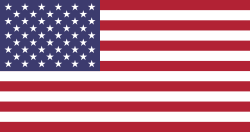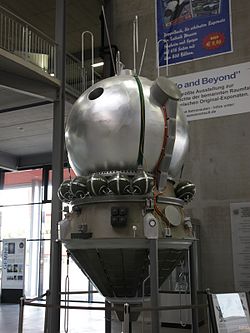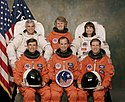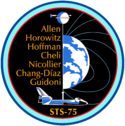STS-76
| STS-76 | |||||
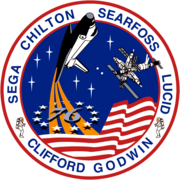 | |||||
| Uppdrag | 76 | ||||
|---|---|---|---|---|---|
| Rymdfärja | Atlantis (16)[1] | ||||
| NSSDC-ID | 1996-018A[2] | ||||
| Färdens tid | 9 dagar, 5 timmar, 16 minuter, 48 sekunder | ||||
| Uppskjutning | |||||
| Startplats | Startplatta 39B vid Kennedy Space Center i Florida | ||||
| Start | 22 mars 1996, 3:13:04 a.m. EST | ||||
| Landning | |||||
| Landningsplats | Edwards Air Force Base runway 22 | ||||
| Landning | 31 mars 1996, 8:28:57 a.m. EST | ||||
| Omloppsbana | |||||
| Varv | 144 st[3] | ||||
| Apogeum | 411 km | ||||
| Perigeum | 389 km | ||||
| Banlutning | 51,6° | ||||
| Sträcka | 6,115 miljoner km | ||||
| Rymdpromenad | |||||
| Antal | 1 st | ||||
| Total tid | 6 timmar, 2 minuter | ||||
| Dockning | |||||
| Rymdstation | Mir | ||||
| Dockning | 24 mars 1996, 02:34:05 UTC | ||||
| Urdockning | 29 mars 1996, 01:08:03 UTC | ||||
| Tid dockad | 4 dagar, 22 timmar, 33 minuter, 58 sekunder | ||||
| Besättning | |||||
| Befälhavare | Kevin P. Chilton (3) | ||||
| Pilot | Richard A. Searfoss (2) | ||||
| Uppdragsspecialister | Linda M. Godwin (3) Michael R. Clifford (3) Ronald M. Sega (2) | ||||
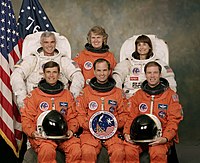 | |||||
| Kronologi Rymdfärjeprogrammet | |||||
| |||||
STS-76 var ett av NASAs rymdfärjeuppdrag till den ryska rymdstationen Mir. Uppdraget flögs med rymdfärjan Atlantis. Det var det 76:e rymdfärjeuppdraget och det 16:e uppdraget för Atlantis. STS-76 var också det tredje uppdraget med dockning med Mir under Shuttle-Mir-programmet.
Uppdraget medförde astronauten Shannon Lucid till laboratoriet. STS-76 sköts upp 22 mars 1996 klockan 03:13 EST från Kennedy Space Centers startramp 39B. Uppdraget varade i nio dagar och landade 31 mars 1996 på Edwards Air Force Base i Kalifornien. Landningen skedde på landningsbana 22 klockan 05:28 PST. STS-76 kretsade kring Jorden uppskattningsvis 145 gånger och färdades cirka 6,1 miljoner km (3,8 miljoner miles) innan den återinträdde i jordens atmosfär.
STS-76 förde med sig en enskild Spacehab-modul tillsammans med Lucid. Lucid ersatte NASA:s astronaut Norman Thagard.
Flygdag 6 utförde Linda Godwin och Michael Clifford USA:s första rymdpromenad kring två dockade rymdfarkoster, från två olika länder.
Referenser
- ^ NASA Space Shuttle Launch Archive Arkiverad 6 augusti 2013 hämtat från the Wayback Machine., läst 28 juli 2016.
- ^ ”NASA Space Science Data Coordinated Archive” (på engelska). NASA. https://nssdc.gsfc.nasa.gov/nmc/spacecraft/display.action?id=1996-018A. Läst 20 mars 2020.
- ^ Manned Astronautics - Figures & Facts Arkiverad 26 september 2015 hämtat från the Wayback Machine., läst 28 juli 2016.
Externa länkar
 Wikimedia Commons har media som rör STS-76.
Wikimedia Commons har media som rör STS-76.
| ||||||||
| |||||||||||||
| ||||||||||||||||||||||||||||||||
Media som används på denna webbplats
STS-76 Mission Insignia
Författare/Upphovsman: Pascal (Flickr user: pasukaru76), Licens: CC0
Vostok spacecraft replica at the Technik Museum Speyer, Germany.
MIR Space Station Emblem
The STS-77 crew patch displays the Shuttle Endeavour in the lower left and its reflection within the tripod and concave parabolic mirror of the SPARTAN Inflatable Antenna Experiment (IAE). The center leg of the tripod also delineates the top of the Spacehab's shape, the rest of which is outlined in gold just inside the red perimeter. The Spacehab was carried in the payload bay and housed the Commercial Float Zone Furnace (CFZF). Also depicted within the confines of the IAE mirror are the mission's rendezvous operations with the Passive Aerodynamically-Stabilized Magnetically-Damped satellite (PAM/STU) appears as a bright six-pointed star-like reflection of the sun on the edge of the mirror with Endeavour in position to track it. The sunlight on the mirror's edge, which also appears as an orbital sunset, is located over Goddard Space Flight Center, the development facility for the SPARTAN/IAE and Technology Experiments Advancing Missions in Space (TEAMS) experiments. The reflection of the Earth is oriented to show the individual countries of the crew as well as the ocean which Captain Cook explored in the original Endeavour. The mission number 77 is featured as twin stylized chevrons and an orbiting satellite as adapted from NASA's logo. The stars at the top are arranged as seen in the northern sky in the vicinity of the constellation Ursa Minor. The field of 11 stars represents both the TEAMS cluster of experiments (the four antennae of GPS Attitude and Navigation Experiment (GANE), the single canister of Liquid Metal Thermal Experiment (LMTE), the three canisters of Vented Tank Resupply Experiment (VTRE), and the three canisters of PAM/STU) and the 11th flight of Endeavour. The constellation at the right shows the fourth flight of Spacehab Experiments.
These six NASA astronauts launched into space aboard the Space Shuttle Atlantis on March 22, 1996 for the STS-76 mission. Pictured on the front row, left to right, are astronauts Ronald M. Sega, mission specialist; Kevin P. Chilton, mission commander; and Richard A. Searfoss, pilot. On the back row, left to right, are mission specialists Michael R. (Rich) Clifford, Shannon W. Lucid, and Linda M. Godwin. The third U.S. Shuttle-Mir docking, STS-76 began a new period of international cooperation in space exploration with the first Shuttle transport of a United States astronaut (Lucid) to Russia's Mir Space Station for extended joint space research. Clifford and Godwin, pictured here in training versions of the Extravehicular Mobility Unit (EMU), performed the first Extravehicular Activity (EVA) during Mir-Shuttle docked operations.
STS-75 Mission Insignia





